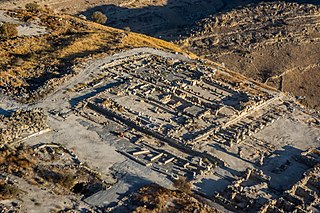 W
WTel Anafa is an archaeological site and nature reserve in the Upper Galilee, Israel.
 W
WAyalon Institute was an underground ammunition factory, located on Kibbutz Hill in Rehovot, Israel, disguised as a kibbutz that ran a laundry service. The factory was established in 1945 and manufactured ammunition until 1948; today it is a museum and national historical site. It was “secretly created in less than a month, 8 meters underground and was run by the Haganah".
 W
WBeit She'arim, also, Kh. Sheikh Abreiḳ, is a Roman-era Jewish village that thrived from the 1st-century BCE until its demise in the early 20th century. The name of site is occasionally rendered as Bet She'arāyim. It is first mentioned by Josephus as Besara, a place then serving as the administrative center of the estates of Queen Berenice in the Jezreel Valley. The village seemed to have been of agricultural importance, as it was being used to store the harvested grain of the neighboring towns and villages. By the mid-2nd century, the village had become the seat of the rabbinic synod under Rabbi Judah ha-Nasi. The site is situated on the spur of a hill about half a kilometer long and 200 meters wide, and lies in the southern extremity of the Lower Galilee mountains, facing the western end of the Jezreel Valley, east of Daliat el-Carmel, south of Kiryat Tivon, and west of Ramat Yishai. It rises 138 metres (453 ft) above sea level at its highest point.
 W
WBersabe ;(Greek: Βηρσαβέ, Βηρσουβαί), or Beer Sheba of the Galilee, was a Second Temple period Jewish village located near the town of Kefar Hananya which marked the boundary between the Upper Galilee and the Lower Galilee, as described by Josephus, with Upper Galilee stretching from Bersabe in the Beit HaKerem Valley to Baca (Peki'in) in the north. Bersabe was one of several towns and villages of Galilee fortified by Josephus during the First Jewish–Roman War, being one of the most defensible positions and where insurgents from across Galilee had taken up refuge against the Imperial Roman army when the surrounding countryside was plundered.
 W
WHippos is an archaeological site in Golan Heights disputed between Syria and Israel, located on a hill overlooking the Sea of Galilee. Between the 3rd century BCE and the 7th century CE, Hippos was the site of a Greco-Roman city, which declined under Muslim rule and was abandoned after an earthquake in 749. Besides the fortified city itself, Hippos controlled two port facilities on the lake and an area of the surrounding countryside. Hippos was part of the Decapolis, or Ten Cities, a region in Roman Jordan, Syria and Israel that were culturally tied more closely to Greece and Rome than to the Semitic ethnoi around.
 W
WMasada is an ancient fortification in the Southern District of Israel situated on top of an isolated rock plateau, akin to a mesa. It is located on the eastern edge of the Judaean Desert, overlooking the Dead Sea 20 km (12 mi) east of Arad.
 W
WSelamin (Greek: Σελάμην), also known as Tzalmon, Selame, Salamis / Salamin, Zalmon, and Khurbet es Salâmeh, was a Jewish village in Lower Galilee during the Second Temple period, formerly fortified by Josephus, and which was captured by the Roman Imperial army in circa 64 CE. Today, the ruin is designated as a historical site and lies directly south of the Wadi Zalmon National Park in Israel's Northern District.